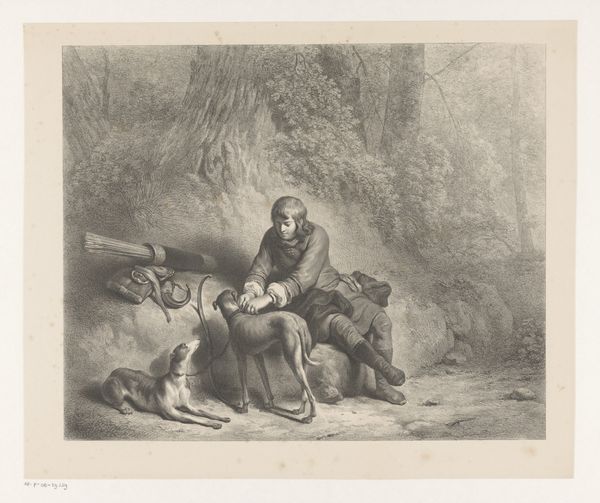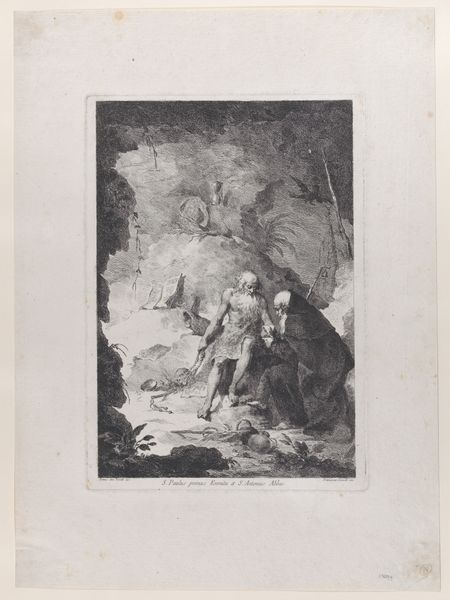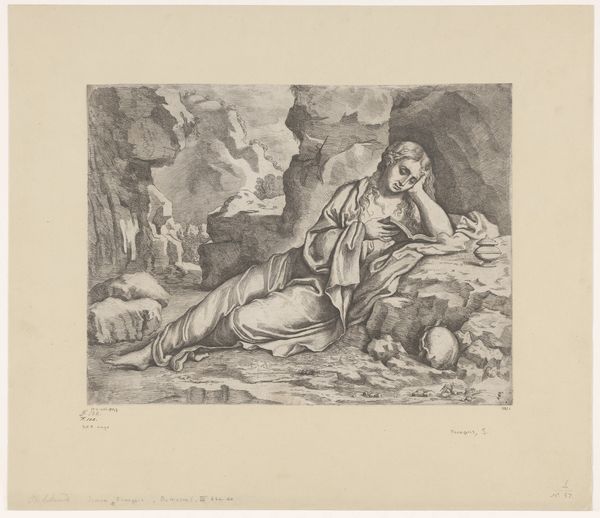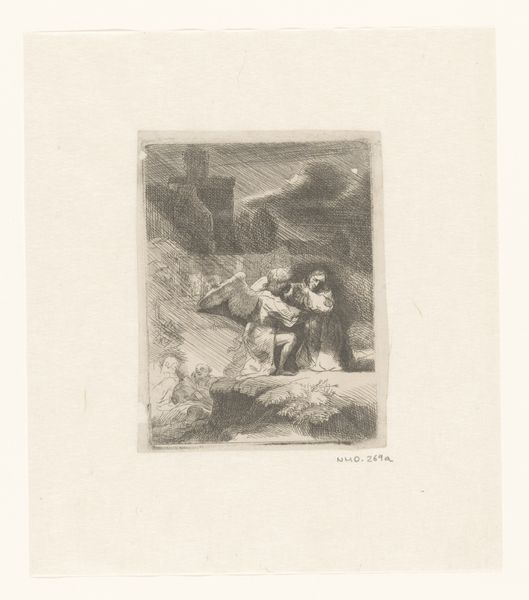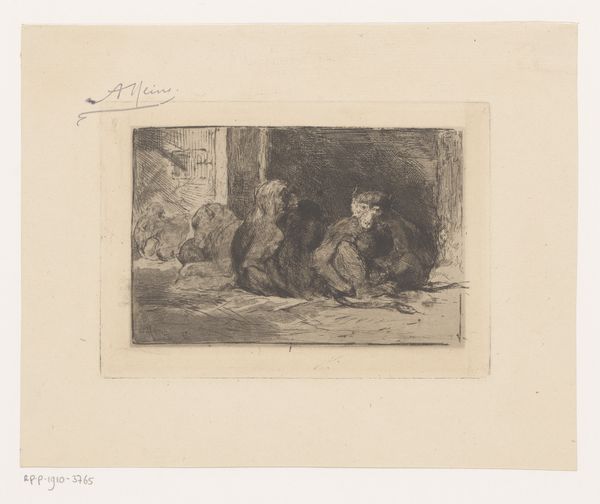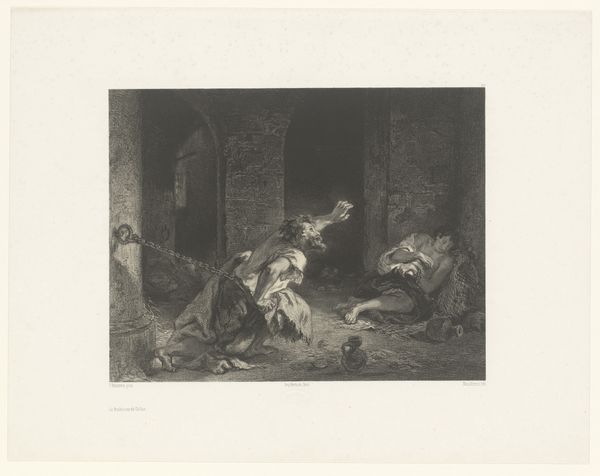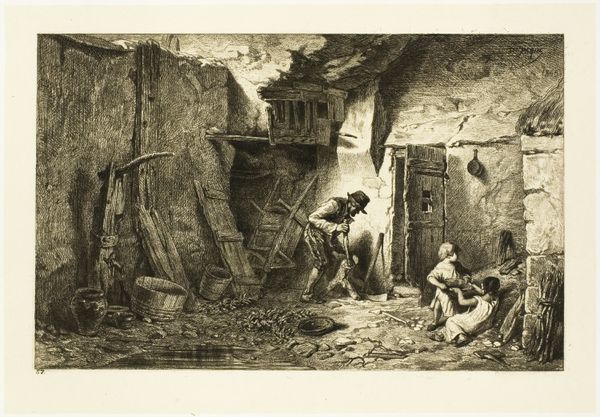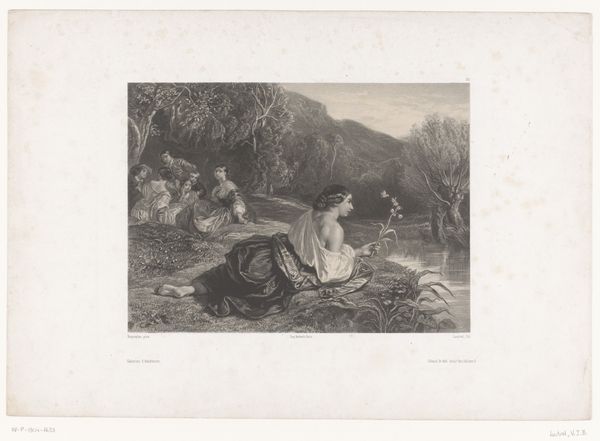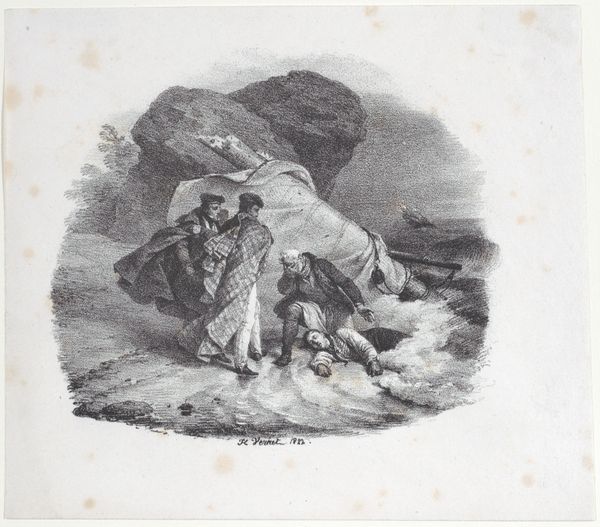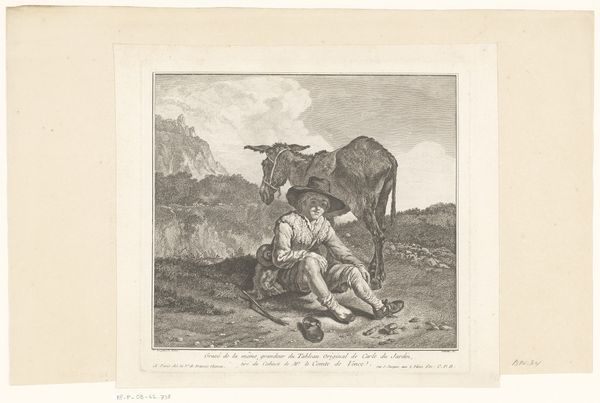
print, engraving
#
narrative-art
# print
#
figuration
#
romanticism
#
history-painting
#
engraving
Dimensions: height 172 mm, width 260 mm
Copyright: Rijks Museum: Open Domain
Joseph Coomans made this print, ‘Graaf Ugolino en zijn zonen in de toren van Pisa’, using etching, a printmaking technique, sometime in the 19th century. The process starts with a metal plate, usually copper or zinc, coated with a waxy, acid-resistant substance called a ground. The artist then scratches an image into this ground with a pointed tool, exposing the metal beneath. When the plate is dipped in acid, the exposed lines are eaten away, creating grooves. These grooves hold ink, so that when the plate is pressed onto paper, the image transfers. The process requires careful labor. Each line must be drawn with precision. The duration of acid bath determines its depth and darkness in the print. Consider the social context. Printmaking in the 19th century facilitated the mass production of images, making art more accessible but also creating new forms of labor. The etcher, like Coomans, was part of a system that reproduced images for a growing public, participating in both artistic expression and industrial production. By understanding the materials, making, and context of this print, we recognize that even a seemingly traditional artwork is deeply intertwined with the social and economic forces of its time.
Comments
No comments
Be the first to comment and join the conversation on the ultimate creative platform.
